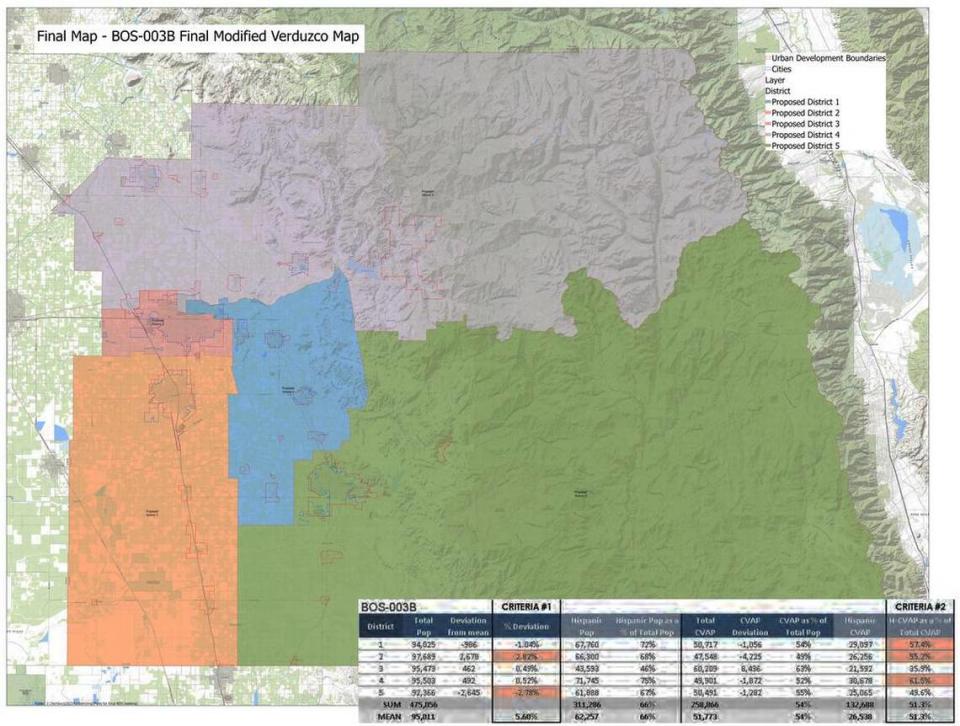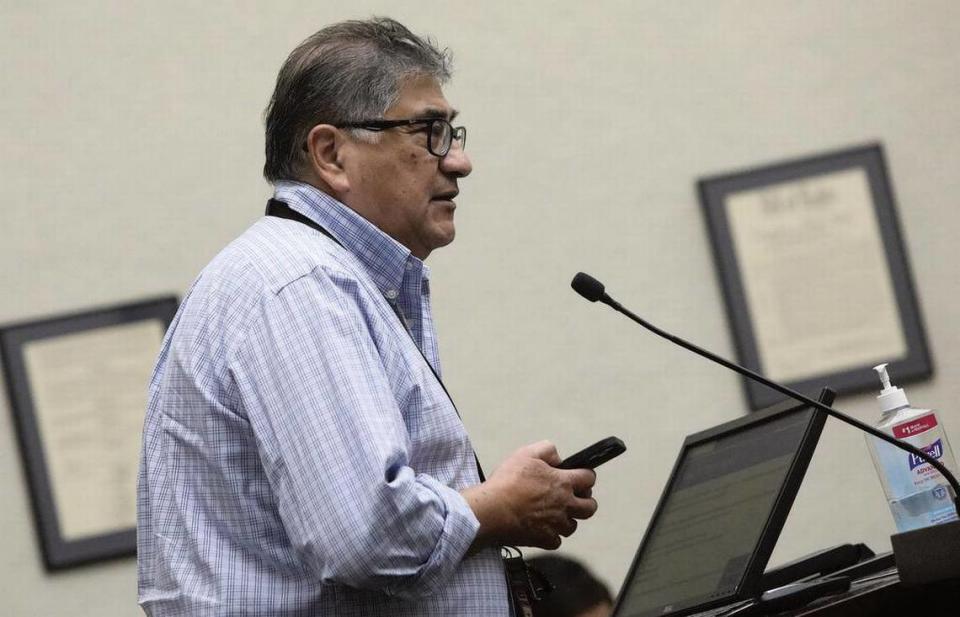Tulare County supervisors back 3 Latino-majority districts. Is that enough?
The Tulare County Board of Supervisors, following a 3-hour-plus hearing on Nov. 9, whittled 32 proposed maps to one drawn by a Fresno City Council assistant on how its supervisoral districts will be shaped following Census data that showed a 15% growth in its Latino population over the past 10 years while the white population dwindled by more than 26%.
Emboldened by the demographic growth that saw Latinos with 65.5% of the population – it was 50.8% in 2000 and 60.6% in 2010 – in addition to a new state law and a grassroots effort that rallied the farmworker community to get involved in the redistricting process, a coalition led by the Dolores Huerta Foundation sought to increase the chances of electing at least two more Latinos to the five-member board.
However, that map which was favored by the county’s redistricting committee was rejected earlier this month by the supervisors in favor of three maps it revised to its preference.
The result is three Latino-majority districts: District 1 held by Larry Micari (57.7% Latino), District 2 held by Pete Vander Poel (55.22% Latino), and District 4 held by Eddie Valero (61.48% Latino).
District 5, held by Dennis Townsend, is 49.64% Latino.
Board chairwoman Amy Shuklian declared the redistricting process a success because of public participation and transparency.
“With the equity coalition map that was brought forward, they asked us to help empower our Hispanic communities to have a better chance of electing leaders of their choice,” said Shuklian minutes before the board voted 5-0 to accept a revised map that was submitted by José Verduzco.

Shuklian said the 2020 Census shows a Latino population growth that includes 51% of the citizen voting age population in the county.
“So, I think that the boundaries of our final maps do this by establishing three districts with over 55%” Latino voting age population, said Shuklian. “One even has over 60%.”
The board, adhering to the federal Voting Rights Act, sought to get three districts with at least 55% Latino citizens of voting age.
The board is scheduled to adopt the map at its Nov. 16 meeting.
Not so fast, said Lori Pesante.
“We haven’t completed our analysis of their most recent iteration because we really need to know what the (voter) registration percentages look like in those districts,” said Pesante, director of civic engagement and government relations with the Dolores Huerta Foundation.
The foundation encouraged the Latino community starting in February to get involved in the redistricting process by attending workshops, expressing their preference for supervisoral districts, and commenting at commission and board meetings.
The coalition map originally had Latino voting age populations of 57.7% in District 1, 63.2% in District 2, and 62.4% in District 4.
It also split the City of Tulare into two districts, linking the voter-rich, higher-income northeastern part of the city with a portion of Visalia. The remaining part would have been paired with farmworker communities like Ducor, Alpaugh and Richgrove. It also threw the eastern mountain area into one district, with Porterville as its base.
However, supervisors decided to keep Tulare in one district and to split the mountain area into three districts.
Pesante said the board’s favored map needs another analysis to see if the new Latino-majority districts would result in statewide Latino candidates winning those districts. The board’s revisions, she said, reduced the effectiveness of the coalition map.
“My sense is that the analysis is probably going to reveal some significant deficiencies in that map,” said Pesante.

Valero was the second Latino ever elected to the board when he won in 2018. Kuyler Crocker lost his re-election bid to Micari last year after one term. Lali Moheno was appointed to fill a vacancy but lost her bid in 2004 to win election to the post.
Valero, who is facing re-election next year, expressed his desire for three districts with at least 55% Latino citizen voting age.
At the Nov. 9 board hearing, public comment was shorter than the previous board meeting on redistricting. However, some speakers expressed frustration that a community-drive effort, as required by the new FAIR Maps Act, was brushed aside by the board.
“I don’t want to be political, because this isn’t about politics,” said former Porterville Mayor Virginia Gurrola. “This is about the lives of people who live in Tulare County. This is about individuals who have come forward and asked for you to hear them out during the commission meetings.
“These are people who come from disadvantaged areas who rarely speak out. They wanted to be in areas with other unincorporated areas very similar to them. They spoke out. And then they were discounted.”
Gurrola said the equity coalition map was not a “Latino power grab.”
Jorge Fernández, a mortgage business owner who operates two businesses in Porterville and lives in Springville, called himself “a conservative, Catholic and extremely pro-life.” He expressed support for the map the board eventually chose.
“I realize there’s a need to ensure proper representation of Hispanic in our country and our county, and we are the majority,” said Fernández, whose parents migrated from Michoacán, México. “There’s no doubt about that, but don’t forget about everyone else.”

